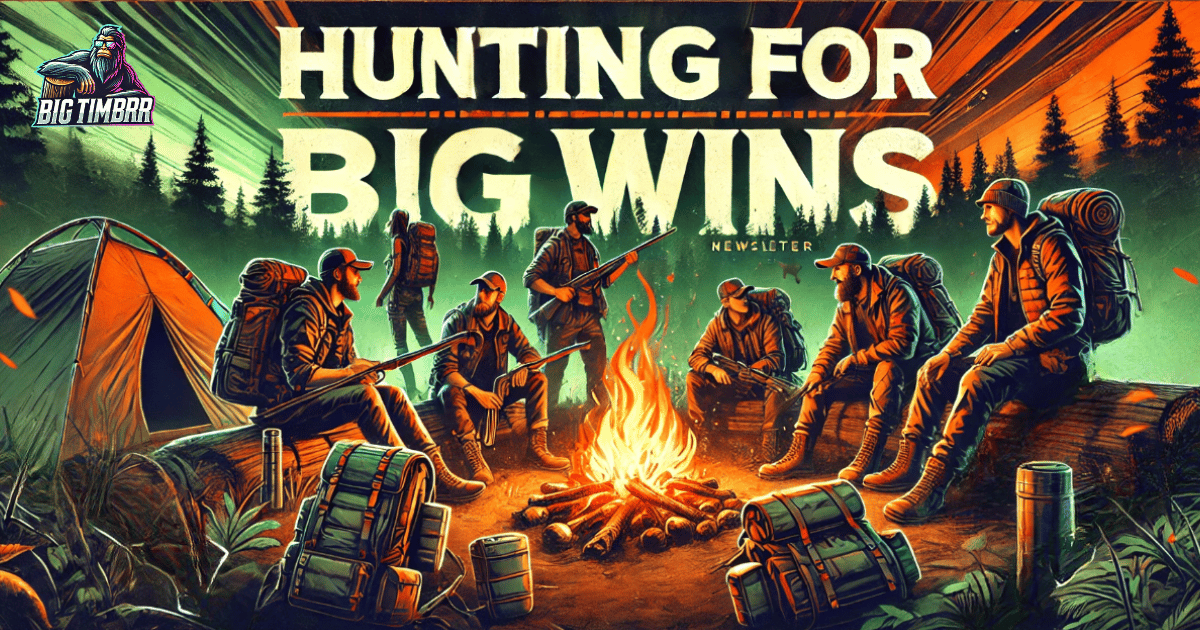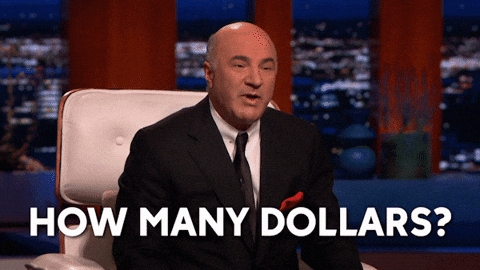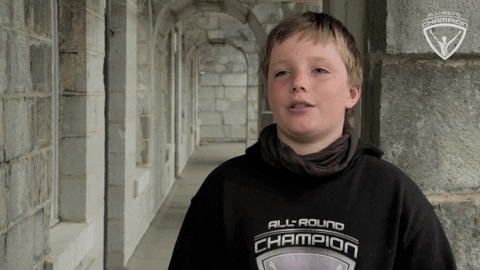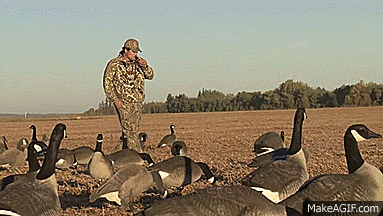- BIG TIMBRR
- Posts
- Hunting For Big Wins
Hunting For Big Wins
Lessons From The Duck Camp and Why the Highest Price Wins

Good Afternoon Legends!
We’re the ‘Hunting Trip with the Guys’ of newsletters—laid-back, legendary and full of good stories (and buzzed by noon.)
Here’s what we have this week in 5 minutes or less:
Tree Industry Insight: A Financial Kick to The Balls
Growth Hack of The Week: Take Low Quality Leads to Ready Ready To Buy Customers
Lessons in Branding: Get Nostalgic
Dad Joke of the Week: More Ducks
Industry Insight: The True Cost of Cheap: Why Competing on Price Is a Losing Strategy
Let’s talk money! Not yours—yet—but the money it takes just to run a tree business these days. Whomp Whomp!

The cost of labor and equipment is skyrocketing. Did you know arborists have increased their hourly rates by 56.9%? It’s not because they’re greedy; it’s because everything—from gear to gas to wages—is more expensive.
So, what does that mean for your tree business? Well, if you’re trying to undercut the competition by being the cheapest, you’re basically inviting yourself to a financial kick in the balls.

Low Prices = Low Profits = Big Problems
When you’re focused on being the cheapest option, you’re not just undervaluing your work—you’re digging yourself into a hole. Here’s the kicker: customers who choose the lowest price often expect the highest quality, and that mismatch leads to frustration on both sides.
Plus, competing on price alone creates a “race to the bottom.” One competitor lowers their price, then another does it, and suddenly, you’re all losing money just to win a job.
Here’s the way I look at it - You should want to be the highest price in town and own it because there’s no benefit to being the 2nd, 3rd or 4th highest. Customers pay for confidence, not compromise. So in the famous words of Ricky Bobby -

Here’s How You Should Approach Pricing:
Focus on Value, Not Cost: Are you fast? Reliable? The expert at removing massive trees no one else can handle? Highlight those skills and charge accordingly. Customers will pay more for quality and peace of mind.
Tell Your Story: People aren’t just hiring someone to cut down a tree; they’re hiring you. Share why you do what you do—your dedication to safety, the care you put into every job, and the expertise you’ve built over the years.
Be Transparent About Your Pricing: Let customers know the costs reflect your team’s skill, your equipment’s quality, and the professional-level service you deliver. Educated customers value quality over the cheapest quote.
The Bottom Line
Yes, costs are going up, and yes, that’s stressful. But instead of trying to beat everyone else on price, focus on being the business people want to hire because you’re the best—not the cheapest.
At the end of the day, it’s about making your work worth every penny you charge. So, don’t race to the bottom; AIM HIGH!

Growth Hack: Implement Price Indicators For Ready Ready To Buy Leads
Let’s talk about why you’re getting low quality leads that waste your time and never buy. It starts with your website. It’s not just there to look pretty (although a solid design doesn’t hurt)—it should also save you time and energy. That’s where price indicators come in. By adding a price range or estimate tool to your site, you’re doing two things:
Qualifying Leads: Potential customers know what to expect before they call, meaning you’re only talking to people who are ready to pay for your level of service.
Saving Time: Fewer tire-kickers means less time wasted on people looking for bargain basement deals.
But I hear the objections already so let me put your mind at ease.

“What if my competitors see my prices?”
First of all, calm down. You’re not handing them your playbook; you’re sharing a range. Something like, “Tree removal typically costs between $1,500 and $5,000 depending on size and complexity.” It gives customers a ballpark without giving your competitors anything concrete.
Besides, your competitors already know the general price ranges. What sets you apart is your value, not your numbers.
“What if my estimate is different from the final quote?”
That’s easy: be upfront. Use language like, “This is a preliminary estimate based on typical scenarios. We’ll confirm pricing after an on-site assessment.” Transparency builds trust, and customers appreciate honesty more than a surprise invoice.
By adding price indicators, you’re not just “putting numbers on a page.” You’re positioning yourself as a professional who values transparency, efficiency, and respect for your customers’ time. And that’s the kind of business people love to work with.
Bonus tip: Pair those price indicators with a simple online estimate tool to really level up. It makes you look high-tech, while also qualifying leads before you even say hello. Win-win.

Lesson in Branding: Duck Camp
When you see or hear the words Duck Camp, what do you think of?

Duck Camp, founded in 2018, carved out a niche in the outdoor apparel market by blending premium hunting and fishing gear with everyday style. Instead of focusing solely on function, they embraced a lifestyle approach, designing clothes that work just as well in the field as they do at a casual dinner.
What Duck Camp Did Right:
Modernized Tradition:
Duck Camp took classic hunting gear and gave it a fresh twist—updated cuts, better fabrics, and a design style that speaks to younger outdoor enthusiasts.Evoked Nostalgia:
Their name alone—“Duck Camp”—feels like a nod to those early mornings spent with family or friends, swapping stories and building memories. It’s an emotional connection wrapped in a brand.
Built a Community:
They didn’t stop at making gear—they created a culture. From social media engagement to featuring real customers, Duck Camp makes people feel like part of something bigger.
Lesson for Tree Service Businesses:
Modernize Tradition:
Tree services have a long history, but you can update your branding to feel more relevant and modern. Think clean, professional logos and visually appealing truck wraps that are rooted in tradition but updated for today’s market.
Create an Emotional Connection:
Duck Camp’s branding resonates because it evokes memories and emotions tied to outdoor traditions. For your tree business, highlight stories of how your services improve customers' lives—clearing storm-damaged trees or preserving a cherished family yard.
Focus on Lifestyle:
Tree care isn’t just about cutting down trees; it’s about creating beautiful, safe, and functional outdoor spaces. Showcase this lifestyle in your branding with photos, testimonials, and content that highlight the value you bring to customers’ homes.
Nostalgic and Rustic Tree Company Name Ideas
Front Porch Forestry – A warm, inviting name that evokes memories of family gatherings and southern charm.
Old Mill Tree Co. – A rustic nod to history and craftsmanship, perfect for a brand with heritage appeal.
Red Barn Arborists – Ideal for rural or traditional markets, tying into the classic American countryside aesthetic.
Campfire Tree Co. – A playful yet nostalgic name that brings to mind outdoor adventures and cozy evenings by the fire.
The Treehouse Collective – A fun, creative name that captures the imagination and speaks to building lasting connections with customers.
The Takeaway:
Duck Camp didn’t reinvent hunting—they just made it cooler. Your tree service business can do the same. Take pride in your roots, but don’t be afraid to refresh your look and connect with customers on a deeper level.
What’s your version of Duck Camp?
Dad Joke of the Week
How do ducks communicate during hunting season?

They use duck calls!
That’s all for this week Legends! Until next time.
Reply